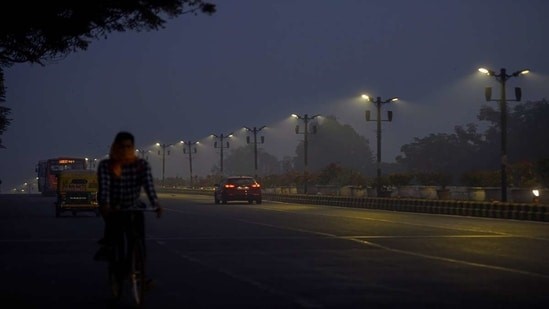
Winter solstice made December 21 shortest day of the year for Indians

The sun set early in the capital on Tuesday (December 21). By 5.29 pm, the sun had quietly sunk into the horizon and disappeared after just providing 10 hours of daylight from the time it had risen in the sky in the morning at 7.04 am.
And, December 21 turned out to be the shortest day of the year for Indians. There’s no deep celestial mystery behind this, as this annual event unfolds every year during the winter solstice. The winter solstice marks the onset of winter, at the time of the shortest day, in the northern hemisphere. It is also the start of summers in the other southern side of the planet.
During the winter solstice, the northern hemisphere is tilted away from the sun in its orbit. Since it is tilted away from the sun, it receives less sunlight, making the day shorter and the night longer.
The solstice arrives twice a year. In the northern hemisphere, the summer (June) solstice occurs around June 20-21 and the winter (December) solstice happens around December 21-22. The solstice triggers the seasons to change on the earth as the planet is slightly tilted on its axis as it travels around the sun.
It is entirely the reverse during the June solstice, when the northern hemisphere ends up receiving the maximum sunlight causing temperatures to turn warm. While the southern hemisphere cools down considerably since it is getting the most indirect sunlight during this time.
Also read: Odisha sees temperature drop, cold waves expected in next 2-3 days
While countries like India in the northern hemisphere experienced its shortest day and longest night on December 21, 22, countries in the southern hemisphere like Maldives, Indonesia or an African country like Kenya or Uganda had the longest day and shortest night.
Once the winter solstice has passed, the days once again begin to grow longer and longer until we reach the summer solstice in which we will enjoy the longest day and shortest night of the year.
Cultural significance of the winter solstice
The winter solstice is regarded as a highly important event in many cultures around the world. In Iran, Yaldā Night, is the winter solstice festival which is celebrated on the longest and darkest night of the year. It’s tradition for friends and family to come together to eat, drink and read poetry until after midnight.
Originally, these customs are meant to protect people from evil during the long and dark night.
In China and East Asia, the Dongzhi festival is an important tradition that celebrates the winter solstice. It is a time for families to get together. In certain cultures, the winter solstice is viewed as the death and rebirth of the sun.
It is believed that the Stonehenge in England and the Torreon in Machu Picchu in Peru were built with the winter and summer solstices in mind.
The stones at Stonehenge were set up in such a way as to frame the two most important events in the annual solar cycle – the midwinter sunset during the winter solstice, and the midsummer sunrise during the summer solstice. And archaeologists believed that the people who constructed Stonehenge also took part in great feasts during the winter solstice.


